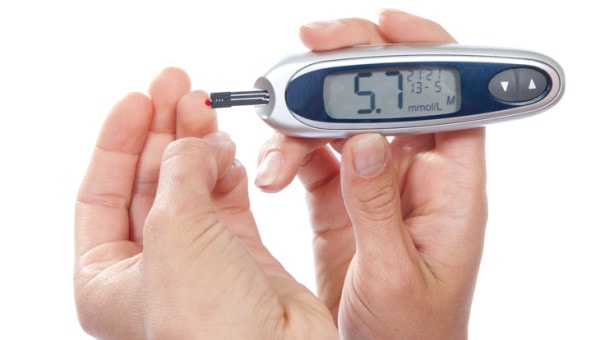Our pancreas produces a hormone called insulin. This hormone is
responsible for regulating the amount of sugar in the blood. When the pancreas doesn’t produce enough insulin, or when the different cells in the body start resisting the effects of insulin, it can lead to the increase of the glucose level in the blood. This condition is what we call now as diabetes mellitus or simply diabetes. There are several types of diabetes but we have
3 major ones: type 1 diabetes,type 2 diabetes, as well as gestational diabetes. Diabetes can cause a variety of symptoms.
The most common symptoms of diabetes include excessive thirst, frequent urination, sudden weight loss, and hunger. Since diabetes is a life long medical illness, there is currently no cure for diabetes, both for type 1 and type 2 diabetes. In order to
control the symptoms and to prevent the disease from getting any worse, physicians will prescribe several treatments for diabetes. Below we have short-term and long-term treatments for diabetes, as well as a bit of information about diabetes that can help you understand its nature and how the treatment can help patients cope with diabetes.
How Diabetes Starts
Before we begin with the different treatments for diabetes, let’s first discuss where diabetes begins. When we eat, the food that we take is broken down and is then converted into energy for the body. When food is broken down, glucose then enters the bloodstream. Insulin, which is a hormone produced by the pancreas, then shifts the glucose from the blood towards the different fat and muscle cells of the body, where the glucose will be turned into fuel.People with diabetes cannot normally change glucose into fuel or energy either because there is something wrong with their pancreas and its production of insulin, or because their cells are starting to resist the effects of insulin. In some cases, people will develop diabetes because of the two
reasons mentioned above. Here we have a breakdown of the three types of diabetes.
- Gestational Diabetes –Even women who don’t have diabetes can develop this condition during pregnancy. There are even women who had a normal blood glucose level prior their pregnancy but ended up with gestational diabetes during the course of their pregnancy. In most cases, gestational diabetes is only present during pregnancy, however the presence of gestational diabetes can already be a warning sign that the individual is at a high risk of developing Type 2 diabetes. Women with gestational diabetes are also at risk of developing cardiovascular diseases later in their life.
- Type 1 Diabetes – While this type of diabetes is commonly diagnosed in children and adolescents, there are cases where people above the age of 20 can still be diagnosed with Type 1 diabetes. In the case of Type 1 diabetes, the body produces little or no insulin at all. What exactly causes Type 1 diabetes is currently unknown, but many health experts believe that viruses, genetics, and various autoimmune problems can be possible factors to the development of Type 1 diabetes.
- Type 2 Diabetes – The most common type of diabetes is the Type 2 diabetes. This type of diabetes is commonly diagnosed in adults, but more and more children and adolescents today are being diagnosed with Type 2 diabetes. In this type of diabetes, the pancreas may produce enough insulin, but the problem lies with the body and how it responds to the effects of insulin. Unlike with Type 1 diabetes, the factors that can cause Type 2 diabetes leans more on the lifestyle of the individual. Most people with Type 2 diabetes are individuals who are obese or those who fail to exercise and eat properly. Genetics is also believed to be one of the main factors of Type 2 diabetes.
Treatment For Diabetes
Diabetes is a long-term illness and because there is no current cure for diabetes,individuals who are suffering from this medical condition will have to settle for various treatments. Take note that these treatments do not eliminate diabetes completely. Instead, these treatments will control the disease and the symptoms from progressing and getting worse.
- Treatment for Type 1 Diabetes – Since there is very little or no insulin produced at all in the case of Type 1 diabetes, people with this type of diabetes will have to introduce insulin themselves.There are 4 ways to do this. People can use a syringe to inject themselves in their fatty tissues in order to administer insulin. Insulin pens are also available, which uses a fine needle and pre-filled cartridges. Individuals with Type 1 diabetes can also choose to use a jet inject or, which uses high-pressure air that sprays insulin into the skin. Insulin pumps are also becoming a popular treatment for diabetes today. This method involves the use of pumps to introduce insulin to the body. The insulin passes a catheter, which is also inserted under the abdomen’s skin.
- Treatment For Type 2 Diabetes – There is currently no cure for diabetes, but patients with Type 2 diabetes can control their illness by adapting to several treatments such as exercise and diet modification. These two treatments can be very useful during the early stages of diabetes, however Type 2 diabetes does tend to worsen in the long run. In cases where Type 2 diabetes has worsened to the point that exercise or diet modification can no longer control it, diabetic medications will be prescribed to the individual.
